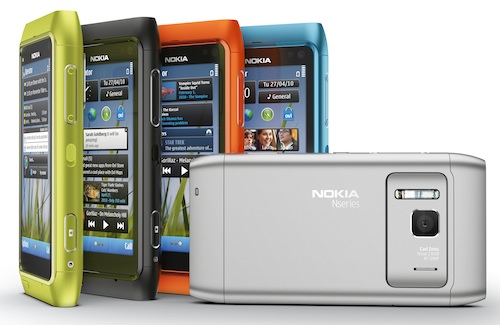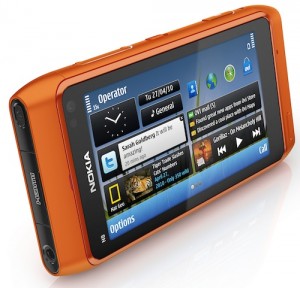
The smartphone market is not for sissies. One moment a manufacturer has a killer product; the next thing you know it’s struggling to remain relevant.
That’s the case with Nokia, the Finnish handset manufacturer that for years ruled the roost in the smartphone market with devices such as the E90, the E61 and, in our view, its best business phone ever, the E71.
But then the Apple iPhone was unleashed, and the dynamics of the smartphone market changed forever. In a few short years, the iPhone — and now a raft of handsets based on Google’s Android operating system — redefined the smartphone experience for users.
Nokia, always good at building solidly designed phones with voice calling as their primary function, fell behind in a world where people wanted to use their phones to do e-mail, browse the Web, and engage in social networking. In user interfaces, Nokia was found wanting.
Symbian had become outdated next to Apple’s iOS and Google’s Android operating systems. It became a millstone around Nokia’s neck. But the company has doggedly stuck to its guns, insisting it is committed to Symbian, and won’t build phones based on Android or Microsoft’s upcoming Windows Mobile 7 software instead.
That’s why the new N8 is arguably Nokia’s most important handset in years. The touch-screen device, which is targeted directly against rival handsets such as the iPhone and the Android-based HTC Desire, is the first Nokia device to run the new Symbian^3 operating system software.
TechCentral spent some time on Tuesday putting the N8 through its paces. Though by no means an exhaustive review (we’ll do an in-depth piece once we’ve had a few weeks with the device), we’d like to share our initial thoughts on the N8.
Without any doubt, the phone’s best feature is its 12-megapixel camera with 28mm wide-angle lens that can shoot video in high-definition at a resolution of 720p and at 25 frames per second. The quality of the camera is superb.
The 135g N8 has a mini-HDMI port (with HDMI connector cable in the box), which means you can watch your pictures and movies directly on a flat-panel TV or monitor.

But it gets even better: a micro USB to USB connector allows you to plug in a USB thumb drive or even an external hard drive and watch movies and other multimedia content on your TV or monitor. In other words, the N8 doubles as a rudimentary home entertainment system.
The phone comes with 16GB of flash memory, which can be expanded to 48GB using an optional microSD card. That should be more than enough for most people.
The N8 can play back video in several formats, including MP4, Real Video and H.264. There’s no support for Windows Media files, unfortunately.
The other big selling point of the N8 is its user interface. Symbian^3 offers a significant improvement over older versions of the software.
Nokia has borrowed the best ideas from Android and the iPhone, though it doesn’t offer anything radical beyond what is already available on these platforms.
Yes, there’s free turn-by-turn navigation, which isn’t yet available to local Android users, which could prove a strong selling point for some users.
But Symbian^3 is strikingly similar to the latest Android releases, offering multiple home screens and customisable widgets for e-mail, social networking, weather, and so on.
An integrated Facebook and Twitter client is a nice touch and long overdue on Symbian devices. Unfortunately, the application won’t be ported to older, Symbian S60-based phones, Nokia says.
On the hardware side, the N8 has a 680MHz processor with a graphics accelerator, a 640×360-pixel, 3,5-inch capacitive-touch screen, assisted GPS, and 3G with high-speed packet access. The camera, which protrudes from the back of the device a little too much for our liking, features Carl Zeiss optics and has a bright xenon flash.
For business users, there’s support for Mail for Exchange and Lotus Notes. It comes with QuickOffice and the ability to subscribe to podcasts and Web feeds.
Nokia is also promising regular firmware updates and the ability to update applications automatically over the air.
The N8 will be available from SA operators in early October — in silver from Vodacom and dark grey from MTN and Cell C. A green version will go on sale in November and an orange version (our favourite) some time in 2011.
The device will cost R5 500 without a contract — well priced against rival devices.
Though the handset probably doesn’t offer quite enough to get owners of devices like the iPhone and HTC Desire to switch, the N8 does mark an important milestone for Nokia. The company is telling the world not only that it’s not going down without a fight but also that it’s still in it to win. — Duncan McLeod, TechCentral
- Subscribe to our free daily newsletter
- Follow us on Twitter or on Facebook




